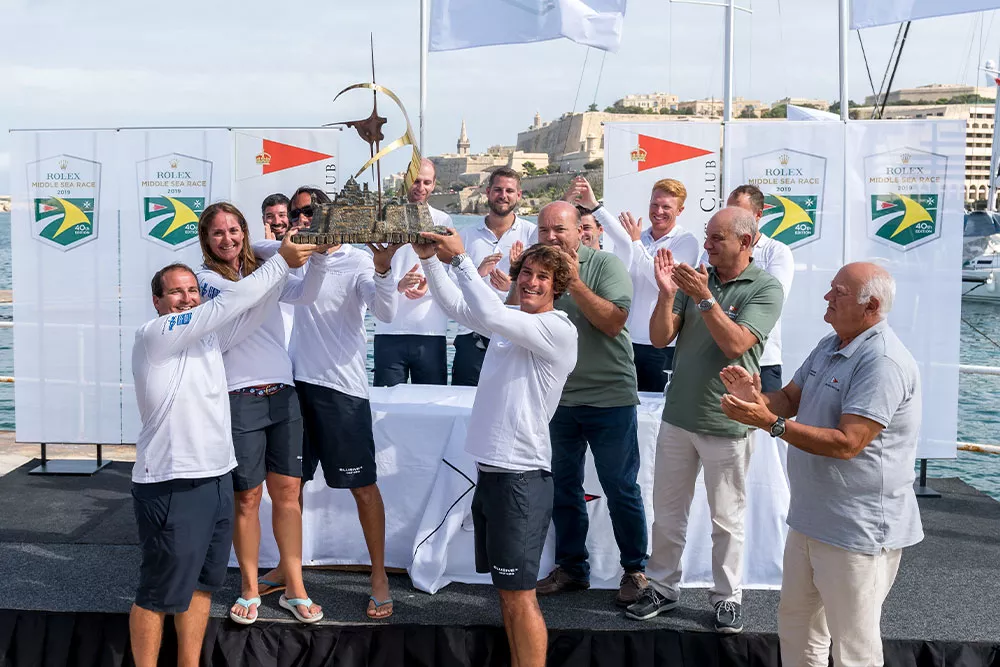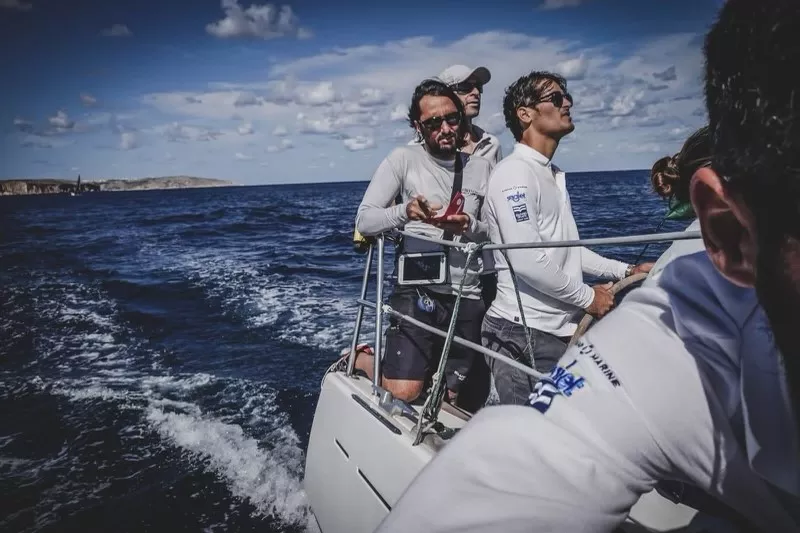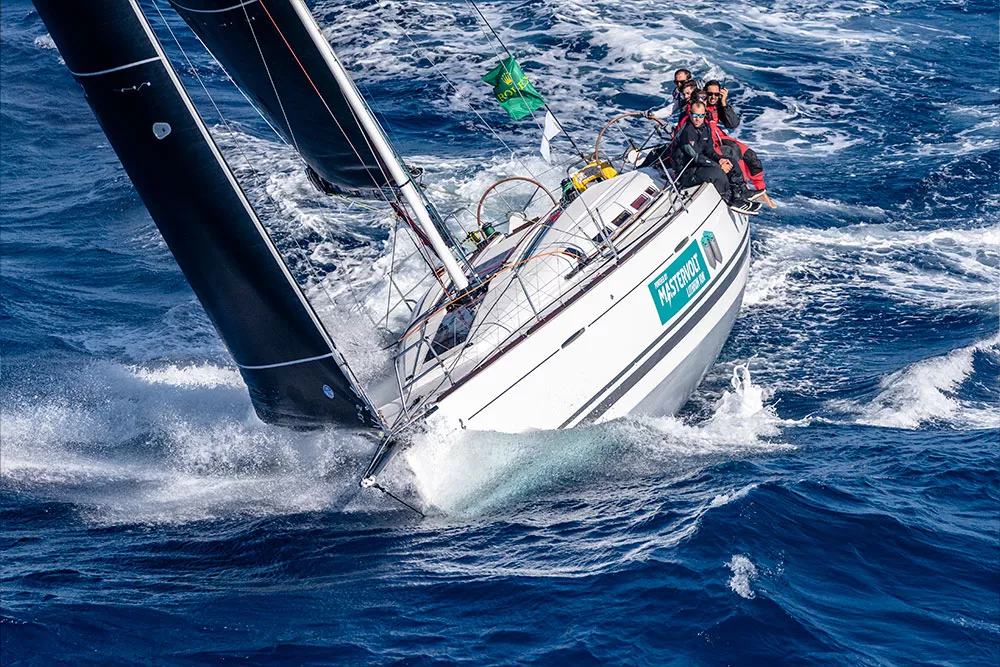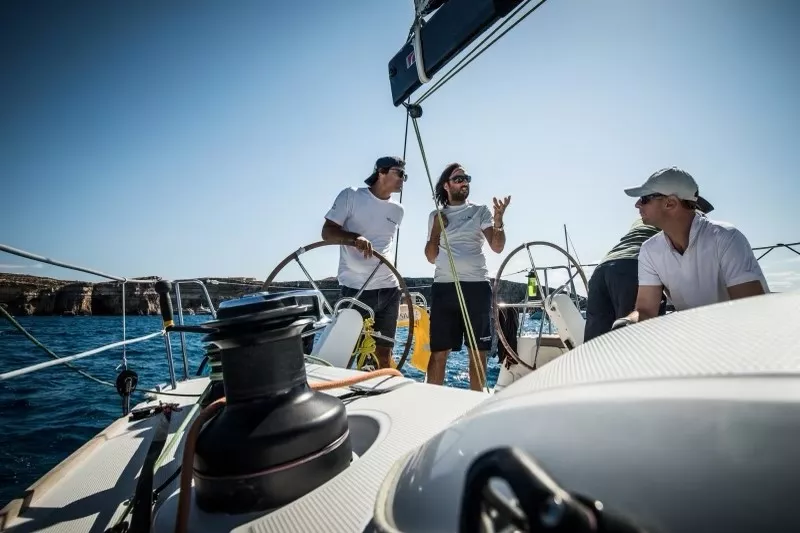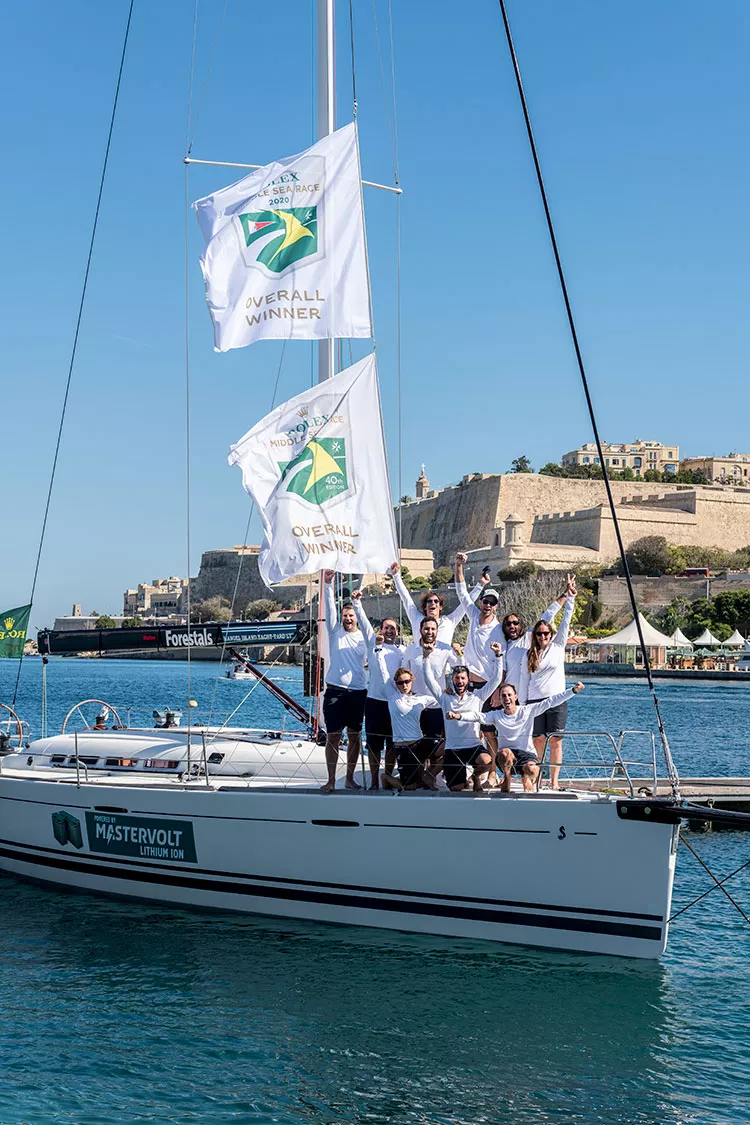What we did, which was modified slightly, is we added pipe cots to the interior. So, the First 45 standard would have lee cloths to allow you to sleep to the windward side, but we added pipe cots so we can now sleep four people on the windward side. So we have two pipe cots in each aft cabin and the pipe cot in the saloon. So, there's a pipe cot and the leak lot underneath in the aft cabin and in the saloon. So that's four people sleeping in the proper place when you're sailing upwind, which, again, it's a small detail but allows the crew to get the rest while still helping with performance.
When on an upwind leg, we have a saying that one person off the rail equates to 0.1 knots. So if you have five people down below sleeping in the wrong place, that's half a knot of boat speed.
It is physically impossible to keep up the concentration unless you get a good rest. Now, some of the crew can get a good enough rest when they're on the rails, sleeping on the rail. However, the drivers, and the trimmers, need to get a little bit of rest down below.
What about the sails? They are the engine of every sailing boat.
So sails are a crucial factor.
So once you have a good boat with a good mast and a good team, you need to have good sails. You're not going to win a race without good sails. It's one of the essential ingredients. You need to choose a brand and a sailmaker who is going to give you the service and help you optimize, and we went with North Sails. I mean, their reputation is second to none.
We did spend a lot of time choosing the sail sizes. With IRC, that is the area where you are allowed to make changes, and they will penalize you or not accordingly. So sail area is one of the basic elements in the IRC rating or any rating. So we did some trial certificates, especially initially with the spinnaker sizes. So when we extended the bow sprit, we did that to be able to carry bigger spinnakers. And again, you need to try and find the trade-off of what is the maximum size you can carry before the rating starts really hitting you, but it still pays out in the performance on the water. The upwind sails, so we carry three downwind sails and the code zero, so that's the way we're set up. We've got an A1, an A2, and an A4, so it's a big downwind in light weather, which is the A1 and also turns into a bit of a reacher. A big downwind sail, which is the A2 which, takes us up to, let's say, 18 knots. And then an A4 which is our heavy weather downwind Spinnaker. Code zero is another very crucial sail for offshore racing. You normally have a lot of reaching conditions, and code zero is crucial for that.
For Upwind sails, we use 3Di, which I think are the stiff and lightest sails on the market. And the performance gain in having stiff, light sails is second to none. So this is an area where you have to find out what the best is, and we believe that the North solution was the best, and go with that. And that's our sail wardrobe effectively.
Since you're a navigator, I cannot avoid a question about the instruments. Which instruments are you using and how much and how do they help you to win the race?
Yes, the instrument package is one of the main factors. So I would say that after having good sails, you need good instruments. You need them both. We changed to a full B&G H5000 system, I believe, in 2016. So that was one of the first changes. And having good instruments and a good way of recording, so using good instruments, using software like Expedition, where you can record your data, is a good base point to quantify your gains with the changes you make.
Especially in handicap racing and mixed fleets, you don't have your competition who's directly sailing next to you. You need to be able to have reliable data to follow your performance. You're looking at small percentage increases for changes, and having good reliable instruments which are very well calibrated and something to record the data is very important. Probably is that, as a navigator, that is quite an important role, and it's something that I have done throughout the last 15 years of my career on different boats.
Are there any other little details you've changed you could share with us?
Well, saving weight up the rig is always beneficial. The running rigging we started sailing in 2016 and what the boat came out with originally from Beneteau was 12 millimeters. Now we went down to 10 millimeters and stripped half the halyard, so we got rid of the cover weight. You don't need it. And now we've even got some 8-millimeter halyards. That's probably on the limit, but all together, we've saved about 20kg. It's not huge, but when you add everything else when you add everything up, it all adds up, and all makes a difference. The cumulative differences are bigger than the individual changes.
What were the low-hanging fruits that you would suggest other owners start with?
The main changes that we discussed, so the bow sprit, the mast, let's say, the watermaker and the pipe cots, that kind of gave us a good package. And those were the low-hanging fruit, let's say, that's where we made the biggest gains.
And so apart from small changes in the boat, we're also looking at small changes in the way the crew works together, the decision-making process, the maneuvers. So once you have a good basis, you start trying to refine in as many areas as possible.
What happened with your IRC rating through all your changes?
Our rating actually increased. In 2016, we were 1.107, and the last race we did was 1.112. However, this needs to also be taken in context because the IRC, as we said, is a secret rule which is evolving. So from one year to the other, the rating might change without you making any changes. So you need to kind of compare it to your competition.
But in general, our approach was to make the boat faster and live with the rating that we were given because we believed that the boat was faster and we could sail against that rating better.
An inevitable question – how much did all these modifications and optimization cost you?
So let's look at it differently. We had a goal where wanted to win the middle sea race. We had a boat already. What are our options? Selling the boat and buying a new boat, building a boat specifically? I mean, what's the budget for that? We can't afford it. At the end of the day, we work hard, and we have other things to spend our money on. Also, we need to live. So buying a new boat is out of the question. So if we look at the price or what we spent to bring what was already a decent boat, the design of the first 45 is a good one, and the platform we started with was very good.
So I think if you look at it that way, it was not very expensive at all, because we couldn't have done anything which would give us a chance and which actually did give us the results we wanted, not once but twice, for what we spent. So yes, the number in our minds is big. We did make sacrifices to be able to afford it. We did manage to get some sponsorship to help, so we had sponsors who did chip in.
The mast was a big chunk of it, and the mast probably cost as much of this as a new set of sails. And the sails didn't come all at once, so we could say we would spend, let's say, 20,000 a year on sails, sometimes a bit more. The mast was a big chunk, so that was a big one to swallow. But the bow sprit was ... we made it ourselves, so it's a carbon fiber bow sprit which we made ourselves.
What would be your recommendation to other owners who might consider racing under IRC and optimizing their boats? Where to start?
First, look at other boats; look at what the winning boats are doing. If they're winning, they must be doing something right, so try and look into that. Look at the rating certificates, look at maybe their changes from year to year, and look at other designs. Try and see where their strong points and where their weak points are, and then do the same with your boat. The process I outlined before looking at taking away the weak points and strengthening your strong points.
For the end, let's touch on the last generation of First boats. You're now a Beneteau dealer, and in 2022, we got two new models – First 36 and First 44. When you look at these two boats, which is an instant thought when you see these two boats?
So the two, these two new offerings from Beneteau, I think, have traced back the heritage, and it's been a long time since the First 45 to have two new boats which both looked very capable in their rights. I haven't sailed either of them yet. I'm looking forward to maybe sailing them next year. And the First 44 reminds me a lot of the way we have set up the First 45, so it's got a bow sprit which is roughly the same length, masthead spinnakers, it's got the deep keel. The difference is that it's got twin rudders, and it's wider and more powerful. The water ballast is something that is very interesting, although I'm not sure that it would work out well with IRC.
But for shorthanded racing and fast cruising, that would be a very strong setup. If I was going to cruise some summer cruising in the Mediterranean, I think the First 44 would be my boat of choice.
The First 36; I mean, what can I say? Wow, it looks like a Downwind flying machine.
It has an interior which I really like. The concept of a boat that is fun and fast to sail is a good starting point for a design brief. So make it fun and exciting, and what can go wrong? If it's fast, fun, and exciting you're winning even if you're not getting the results - at least you're getting the smiles. It looks like a very good platform with a very logical layout and is very well laid out.
I mean, both the 44 to 36 have very good cockpit dimensions and logical and efficient layouts. So even if right off the bat they're not 100% sorted, there's a good base to tweak. If you have to ask me which one of them I would choose, I would like to have both of them, and depending on the conditions of the race, you will choose which one to take with me. Because if it's a predominantly downwind race, I'm pretty sure that the First 36 is going to be a very, very strong contender. The 44, I think, is I see the, let's say, the DNA of the 45 in her. So I imagine she might have the same potential.

